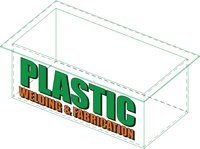Plating Tanks
The metal plating industry is a crucial sector that plays a vital role in providing high-quality, durable finishes to various metal products. From automotive parts to household appliances, metal plating is used to enhance the appearance and functionality of a wide range of products. However, this industry also faces several challenges, such as corrosion, chemical resistance, and environmental regulations. To overcome these challenges, many metal plating companies are turning to thermoplastic process tanks. In this blog post, we will discuss the benefits of using thermoplastic process tanks in the metal plating industry.
First and foremost, let's understand what thermoplastic process tanks are. For more plating applications, these tanks are manufactured using Copolymer Polypropylene (CPP). This material is selected for its excellent chemical resistance, high strength, and durability. Unlike metal tanks, thermoplastic tanks do not corrode or react with the chemicals used in the plating process, making them ideal for use in this industry.
One of the biggest advantages of using thermoplastic process tanks in the metal plating industry is their corrosion resistance. Metal plating involves the use of strong and corrosive chemicals, such as acids and alkalis, to create the desired finish on metal products. These chemicals can cause severe damage to metal tanks, leading to leaks, contamination, and even accidents. However, thermoplastic tanks are highly resistant to these chemicals, making them a safer and more reliable option for storing and handling plating solutions.
Moreover, thermoplastic tanks are also lightweight, making them easier to install and move around. This is particularly beneficial for metal plating companies that need to frequently relocate their tanks for maintenance or production purposes. The lightweight nature of these tanks also makes them more cost-effective as they require less labor and equipment for installation and maintenance.
Another significant advantage of using thermoplastic process tanks is their design flexibility. These tanks can be easily customized to meet the specific needs of a metal plating company. For instance, the size, shape, and configuration of the tank can be adjusted to fit the available space and accommodate the plating process requirements. This flexibility allows for better utilization of space, leading to increased efficiency and productivity.
In addition to being corrosion-resistant, thermoplastic tanks are also non-porous, which means they do not absorb or retain chemicals. This is crucial in the metal plating industry, where even the tiniest amount of contamination can ruin the plating process and result in rejected products. With thermoplastic tanks, there is no risk of contamination, ensuring a consistently high-quality finish on metal products.
In conclusion, the benefits of using thermoplastic process tanks in the metal plating industry are numerous. They offer superior chemical resistance, and design flexibility, and are lightweight, making them a cost-effective and efficient option for storing and handling plating solutions. Moreover, their non-porous nature and other features make them an environmentally friendly choice. With the growing demand for high-quality, durable finishes in various industries, it is no wonder that thermoplastic tanks are becoming increasingly popular in the metal plating industry.
